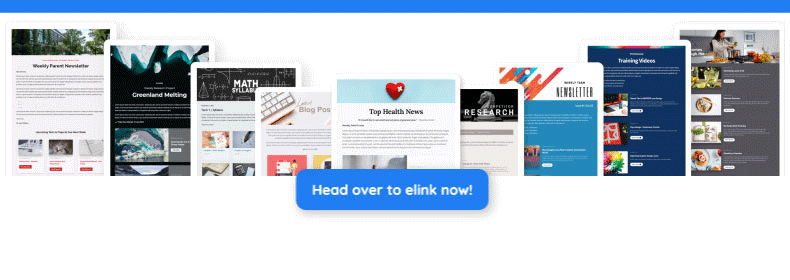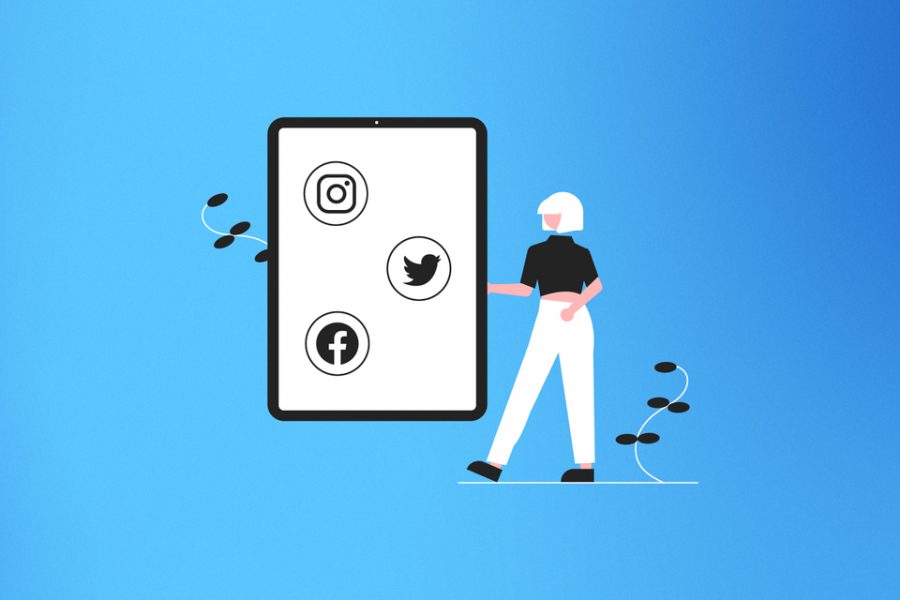Picture this: You’ve spent hours crafting a brilliant blog post, a deep-dive whitepaper, or a witty newsletter filled with industry insights. You hit publish, sit back, and… crickets! No shares, no clicks, no engagement.
That’s where email marketing steps in. Unlike social media, where algorithms decide who sees what, email goes straight to your audience—no filters, no guesswork. But here’s the thing: an email isn’t just a way to send content; it’s a conversation. When done right, it builds relationships, strengthens your brand, and makes sure your content doesn’t just get seen—it gets remembered.
Let’s break down how you can use email marketing to distribute content effectively—and more importantly, how to make people look forward to opening your emails!
Crafting Engaging Emails that People Actually Want to Read!
If your email feels like just another sales pitch—or worse, an obligation—it’s getting ignored. So what can you do about it? Make your emails impossible to resist. Read on to know how you can do this 🙂
1. Nail the Subject Line Like a Pro

Your subject line is the gatekeeper. Get it right, and your email gets opened. Get it wrong, and it’s off to the dreaded “unread” graveyard. The trick is to spark curiosity, add a little urgency, or tease a benefit. Instead of something bland like “New Blog on Marketing Trends,” go for something that feels personal and intriguing. A subject line like “Your 2024 Marketing Playbook—Are You Ready?” makes the reader feel like they’re getting insider knowledge. Something playful like “Steal These 3 Email Hacks Before They Go Mainstream” taps into curiosity and a fear of missing out. And if you’re feeling bold, a confession-style approach—“We Made This Mistake (And You Might Be Too!)”—can work wonders. The goal isn’t just to be seen. It’s to make people want to open your email, not just feel like they should.
Read More: What is Content Distribution & Everything You Need To Know About!
2. Make It Personal
Personalization isn’t just slapping a first name at the top of an \email. It’s about making the reader feel like the message was meant just for them. If someone has been engaging with your SEO content, they don’t need an email about social media marketing. If they recently downloaded a guide on content strategy, they’d probably love a follow-up with advanced tips. Relevance is everything. The moment your email starts feeling like a mass blast, you’ve lost them. A well-personalized email makes the reader feel like you understand them, not like you’re just trying to get them to click on something.
3. Write Like a Human, Not a Corporate Robot

Nobody enjoys emails that sound like they were written by a legal team. If your message reads like a stiff press release or an instruction manual, you’re doing it wrong. People connect with people, not faceless brands. Your emails should feel like a friendly conversation, not a cold transaction. Ditch the jargon, write like you talk, and don’t be afraid to inject a little personality. If you can make someone smile, nod along, or even chuckle, you’re already winning. Emails that feel personal and natural get read. The ones that feel like work get deleted.
4. Give Just Enough to Make Them Click
The goal of your email isn’t to spill everything—it’s to spark curiosity and get the reader to take action. If you’re sharing a blog post, don’t just paste a paragraph from it. Instead, tease the content with a thought-provoking question, a surprising statistic, or a bold statement. Something like, “Did you know 60% of marketers struggle with email engagement? We found a fix that increased our open rates by 35%—check it out here.” That’s enough to get someone thinking without overwhelming them with too much information. Think of it like a movie trailer. Give them just enough to make them want more.
5. Don’t Leave Them Hanging—Tell Them What to Do Next
If your email doesn’t have a clear call to action, you’ve just sent out a really well-written dead end. What do you want your reader to do? Read an article? Sign up for a webinar? Download a guide? Spell it out.

A strong, clear CTA makes all the difference. Instead of something vague like “Learn More,” go for something direct and enticing like “Grab Your Free Guide” or “Watch the Full Breakdown.” People won’t take action unless you make it ridiculously easy for them. Guide them to the next step, and they’ll follow.
Value of Email Marketing in Content Distribution
So why email marketing over, say, social media? Simple, control & intent!
Why choose email marketing over social media? Simple—control and intent. With email, you own your list, meaning there are no ever-changing algorithms deciding who sees your content. Unlike social media, where organic reach can be as low as 5%, email marketing boasts an average open rate of 20-30% (HubSpot). This higher engagement translates to better conversions, as people who open emails have already shown interest—one reason why email marketing drives more conversions than social media and SEO combined (Campaign Monitor). Plus, email offers incredible repurposing opportunities, allowing you to transform your best content into newsletters, drip campaigns, or exclusive subscriber-only insights. In short, email marketing gives you direct, meaningful access to your audience—no middleman, no guesswork, just results.
Read More: How to Develop a Powerful Content Strategy?
How to Use Email Marketing for Effective Content Distribution
Now that we’ve set the stage, let’s talk strategy. Email marketing isn’t just about hitting ‘send’ and hoping for the best. It’s about delivering the right content to the right people at the right time—and making it an experience they actually look forward to. Here’s how to make sure your emails aren’t just another notification to swipe away.
Use a Consistent Email Schedule
Imagine a friend who only texts you when they need something. Annoying, right? The same goes for email marketing. If you disappear for months and then suddenly pop up asking people to read your content, it’s no surprise if they ignore you. A consistent schedule builds trust and anticipation. Whether it’s weekly, bi-weekly, or monthly, set an expectation so your audience knows when to look out for you. The best newsletters feel like a regular catch-up, not an unexpected cold call.
Match Content with the Right Audience
Not every subscriber is interested in every piece of content you create—and that’s okay. The key is segmentation. If someone signed up for your email list after downloading a social media guide, they probably don’t need deep-dive articles about SEO. On the flip side, if a reader engages mostly with your thought leadership pieces, sending them beginner-level content might turn them off. Use data from past interactions, clicks, and downloads to tailor your emails. When people feel like your content is speaking directly to them, engagement skyrockets.
Create an Exclusive Newsletter
A newsletter isn’t just a roundup of links—it’s an experience. The best ones don’t just dump content; they curate it. Your subscribers should feel like they’re getting something special, something they wouldn’t get just by scrolling your blog or following you on social media. This is where platforms like elink.io shine. With elink, you can effortlessly compile articles, insights, and resources into visually appealing, digestible newsletters that actually get read. But don’t stop at just sharing links—add value. Share personal reflections, behind-the-scenes insights, or even subscriber-only tips. Make people feel like they’re part of an exclusive club, not just another name on your email list.

Leverage Automation
You don’t have to manually craft every email from scratch—automation is your best friend. Set up email sequences for new subscribers to welcome them and introduce them to your best content. Create automated workflows for content updates, follow-ups, or even lead nurturing campaigns. A well-timed email sequence keeps your content working for you around the clock, making sure your audience stays engaged even when you’re not hitting ‘send’ yourself. The key is to make automation feel human. No one wants to feel like they’re trapped in a robotic email funnel—so personalize wherever possible.
Optimize for Mobile
Here’s a reality check: nearly half of all emails are opened on mobile devices. If your emails aren’t designed for smaller screens, you’re losing a huge chunk of your audience before they even get to your content. Keep your subject lines concise, your paragraphs short, and your call-to-action buttons big enough to tap with a thumb. No one wants to pinch and zoom to read an email. The easier you make it for people to consume your content, the more likely they are to actually engage with it.
Read More: Win-Back Email Campaigns: Make Your Customers Fall in Love Again!
Wrapping Up
Email marketing is an invitation to engage, to connect, and to offer something genuinely valuable. It’s not about stuffing inboxes with promotions or drowning readers in endless links. It’s about creating a space where your audience wants to hear from you. When done right, it transforms casual readers into loyal subscribers, engaged customers, and even brand advocates.
The secret? Treat every email like a conversation, not a sales pitch. Make your content so good that opening your email feels like discovering a little treasure in their inbox. Give them something worth their time, whether it’s insight, inspiration, or a new perspective they wouldn’t have found elsewhere.
So go ahead—craft that next email with purpose. Experiment, refine, and above all, keep it human. Because at the end of the day, no one remembers another marketing email. But they do remember the ones that made them think, smile, or click ‘reply.’ Now, time to hit send—just remember, no one likes a boring inbox!
FAQs
1. How often should I send emails for content distribution?
It depends on your audience and industry, but a good rule of thumb is once a week or bi-weekly. Test and adjust based on engagement.
2. What’s the best way to grow my email list?
Offer valuable incentives like free guides, exclusive insights, or discounts in exchange for sign-ups. And never, ever buy email lists!
3. How can I improve my email open rates?
Strong subject lines, personalization, and proper timing (Tuesday and Thursday mornings often work best) can boost open rates.
4. Should I use images and GIFs in my emails?
Yes, but sparingly. A well-placed image or GIF can enhance engagement, but too many can trigger spam filters or slow load times.
5. What’s the biggest mistake brands make with email marketing?
Not adding value. If every email feels like a sales pitch, people will stop opening them. Balance promotional content with educational and entertaining content.
Further Reads:
How To Start a Subscription Newsletter?
8 Reasons Why Your Email Goes To Spam!
How To Start Curating Email Newsletters Like A Pro
10 Amazing Lead Magnet Ideas & Examples To Grow Your Email List
15 Email Marketing Best Practices For Your Next Campaign!






